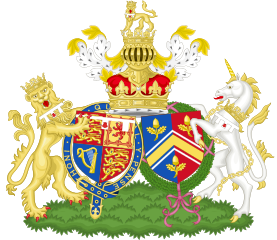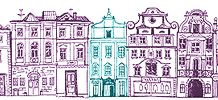Genes Reunited Blog
Welcome to the new Genes Reunited blog!
- We regularly add blogs covering a variety of topics. You can add your own comments at the bottom.
- The Genes Reunited Team will be writing blogs and keeping you up to date with changes happening on the site.
- In the future we hope to have guest bloggers that will be able to give you tips and advice as to how to trace your family history.
- The blogs will have various privacy settings, so that you can choose who you share your blog with.
Official Blogs
What the symbols on coats of arms, family crests and seals mean
Family crests and coats of arms - does your family have one? Genes Reunited reveals the meanings behind the signs of heraldry. What do they represent? What’s the difference between a coat of arms and family crest? And what does a lion on a red background represent?
A coat of arms is a unique heraldic design on a shield, surcoat (loose outer coat or gown) or tabard (tunic or cape garment). Medieval knights used coats of arms to identify the wearer. Heralds, or announcers, would introduce knights at competitions and spectators could distinguish each knight by the design adorning his shield, helmet and armour. A knight's battle gear was so prestigious and spoke to all of his achievements, so the coat of arms evolved into a status symbol that provided commentary on one's family history, property and profession or occupation.

The coat of arms generally refers to the, cape, shield, crest and helmet, while the family crest technically only refers to the small image that lies on the helm (top of the helmet). The family crest is a component of a coat of arms, which can be used as a simplified symbol when the full coat of arms is too detailed.
British heraldry rules only allowed a firstborn son to receive his father's crest upon his death. By default, the crest would go to the firstborn grandson of a daughter if the man had no sons. In a number of heraldry traditions, a couple blended their respective family crests when they married to form a hybrid version (note the Duke and Duchess of Cambridge's combined Coat of Arms on the right).
Colours and symbol meanings
Gold (or): generosity and elevation of the mind
Silver or white (argent): peace and sincerity
Red: warrior or martyr; military strength and magnanimity
Blue: truth and loyalty
Green: hope, joy, and loyalty in love
Black: constancy or grief
Purple: royal majesty, sovereignty, and justice
Orange: worthy ambition
Maroon: patient in battle and yet victorious
Flowers and fruit
Flowers usually represent hope and joy while fruit signifies felicity and peace. There are some more specific meanings for certain flora.
Acacia branch or leaves: eternal and affectionate remembrance
Apple: liberality, felicity, and peace
Bay leaves: poet or victor's laurel
Berries: liberality, felicity, and peace
Cypress: death and eternal life thereafter
Grapes: liberality, felicity, and peace; also associated with wine-making
Laurel leaves: peace and/or triumph
Oak tree, leaves or bush: great age and strength
Olive branch or leaves: peace and concordance
Rose: mark of the seventh son (a red rose symbolises grace and beauty while a white rose means love and faith)
Animals
Animals were frequently used as a main charge in coats of arms. They were shown in certain traditional postures (usually in positions of combat). Usually the animals chosen were fierce and ferocious looking or they represented positive traits such as wisdom, resourcefulness and loyalty.
Bear: strength, cunning, ferocity in the protection of one's kindred
Boar/boar’s head: bravery; fights to the death/hospitality
Dolphin: swiftness, diligence, salvation, charity, and love
Dove: loving constancy and peace; the Holy Spirit; with an olive branch in its bill, it signifies a harbinger of good tidings
Eagle: person of noble nature, strength, bravery, and alertness; or one who is high-spirited, ingenious, quick-witted, and judicious. If wings are displayed, it signifies protection. An eagle with two heads symbolises conjoining forces
Elephant: great strength, wit, longevity, happiness, royalty, good luck and ambition
Fish: a true, generous mind; virtuous for himself, not because of his heritage; also unity with Christ, spiritual nourishment
Fox: one who will use all that he/she may possess of wisdom and wit in his/her own defence
Hawk or falcon: one who does not rest until they’ve achieved their objective
Horse: readiness for all employments for king and country
Lamb: gentleness and patience under suffering. A lamb carrying a staff or banner with a cross is a paschal lamb which represents faith, innocence, bravery, gentleness, purity, and a resolute spirit
Leopard: valiant and hardy warrior who enterprises hazardous things by force and courage
Lion: dauntless courage
Panther: fierce but tender and loving to children and will defend her children with her life
Stag/stag’s antlers: one who will not fight unless provoked; peace and harmony; strength and fortitude
Swallow: one who is prompt and ready in doing business; also bringer of good news
Swan: poetic harmony and learning or lover thereof; light, love, grace, sincerity, perfection
Tortoise: invulnerability to attack
Tiger: fierceness and valour; resentment; dangerous if aroused
Mythological creatures
Some mythological creatures were also used on coats of arms and crests with specific significance in heraldry.
Centaur: eminence in the field of battle
Dragon/wyvern (dragon with only two legs): valiant defender of treasure; valour and protection
Griffin (head, wings, and talons of an eagle with the body of a lion): valour and death-defying bravery; vigilance
Harpy (virgin's face, neck and breast with the body of a lion): ferocity under provocation
Hydra (dragon with seven heads): conquest of a very powerful enemy
Mermaid: eloquence
Pegasus: poetic genius and inspiration; messenger of God
Phoenix: symbol of resurrection
Sphinx: omniscience and secrecy
Unicorn: extreme courage; virtue and strength
Celestial beings and crosses
Crosses on crests are usually symbolic of some Christian experience or sentiment. Figures such as angels and deities represent dignity, glory and honour.
Angel or cherub: dignity, glory, and honour; missionary; bearer of joyful news
Cross crosslet (crossed at each end): signifies the fourfold mystery of the cross
Cross: faith; service in the Crusades
Cross (Celtic): unity of heaven and earth
Cross fitchée (cross pointed at base): a combination of cross and sword; unshakeable faith
Cross flory (cross flowered at each end): one who has conquered
Cross pattée or cross formée (cross which has arms narrow at the centre): military honour
Cross maltese (cross with eight points): blessings; badge of Knights Hospitaller
Cross moline: the mutual converse of human society (said to represent a millstone)
Cross raguly: difficulties encountered
Seraphim (angel with three pairs of wings): dignity, glory, and honour; missionary; bearer of joyful news
Objects
Anchor: hope; religious steadfastness
Bells: power to disperse evil spirits. A hawk's bells denotes one who was not afraid of signalling his approach in peace or war
Chains: reward for acceptable and weighty service. With crowns and collars, this suggests the bearer bore the chain of obligation or obliged others because of services done
Fleur-de-lis: purity; light; floral badge of France; represents sixth son as mark of difference
Hand/red hand: pledge of faith, sincerity, and justice; two right hands conjoined represent union and alliance/mark of a baronet
Harp: well-composed person of tempered judgment; contemplation; mystical bridge between heaven and earth
Letter (i.e., a, b, c): may represent great battles or tournaments beginning with that letter
Plume of feathers: sign of willing obedience and serenity of mind
Scallop shell: traveller to far places or victorious naval commander
Sphere: geographical or scientific reference
Sword/dagger/dart: justice and military honour
Torch: life; zealousness; engaging in signal service; truth and intelligence
You can trace your family history by researching your family tree on Genes Reunited. Perhaps you’ll find out if anyone in your family acquired a family crest or coats of arms. Now you’re aware of some of the meanings behind the colours and symbols, you might be able to determine some of your ancestors' traits and gain a sense of your family’s heraldry.
Comments
|
Send Message |
My family have a coat of arms the name is Clark what does it actually stand for and does it only apply to some people in that family?
|
|
Send Message |
My family have a coat of arms the name is Clark what does it actually stand for and does it only apply to some people in that family?
|
|
Send Message |
"British heraldry rules only allowed a firstborn son to receive his father's crest upon his death. By default, the crest would go to the firstborn grandson of a daughter if the man had no sons. In a number of heraldry traditions, a couple blended their respective family crests when they married to form a hybrid version (note the Duke and Duchess of Cambridge's combined Coat of Arms on the right)."
Surely it's the arms that passes, not the crest. And the crest isn't part of the achievement. You don't combine crests but you can combine the shield content. It doesn't appear that this description was written by a heraldic professional. |

